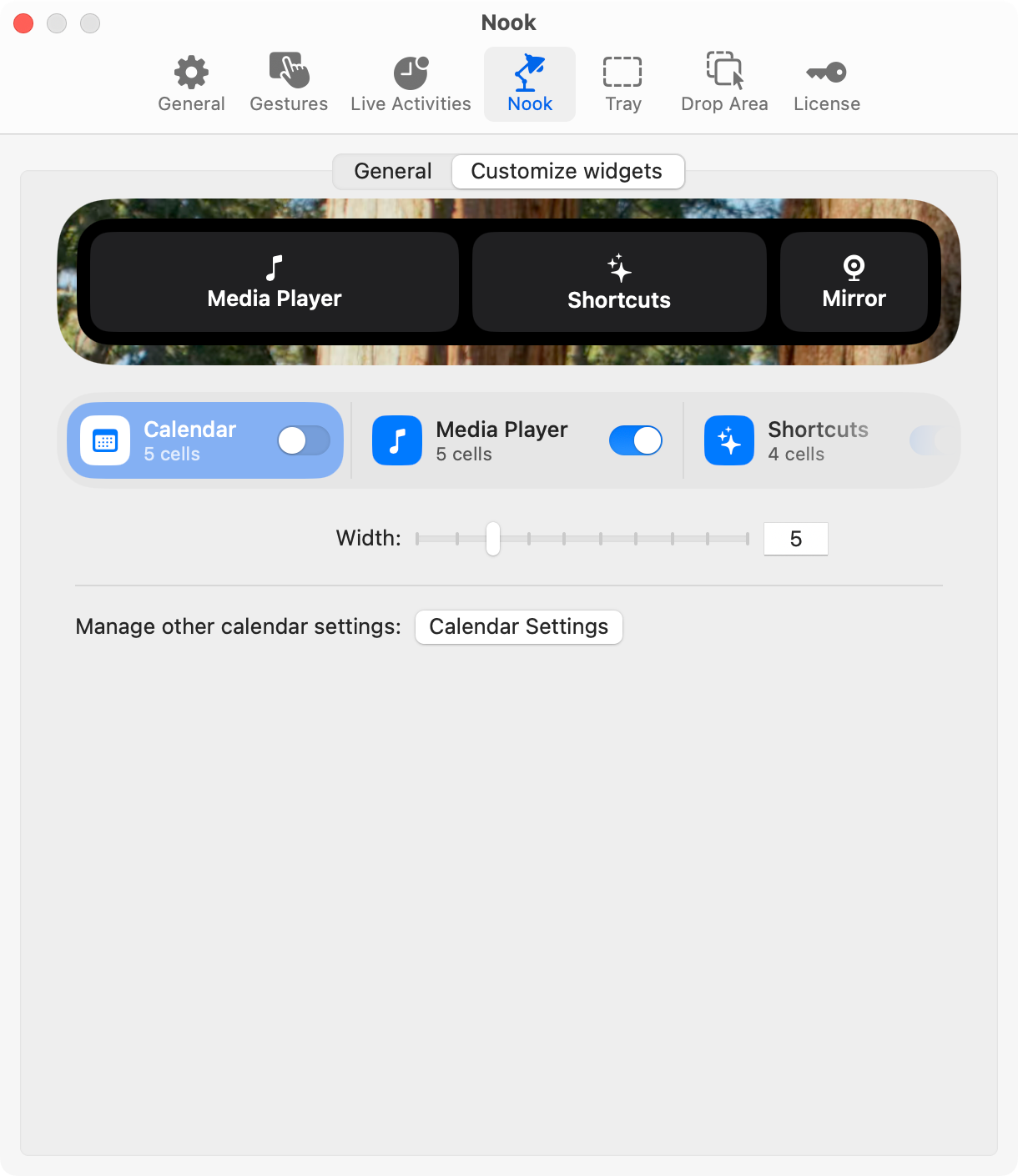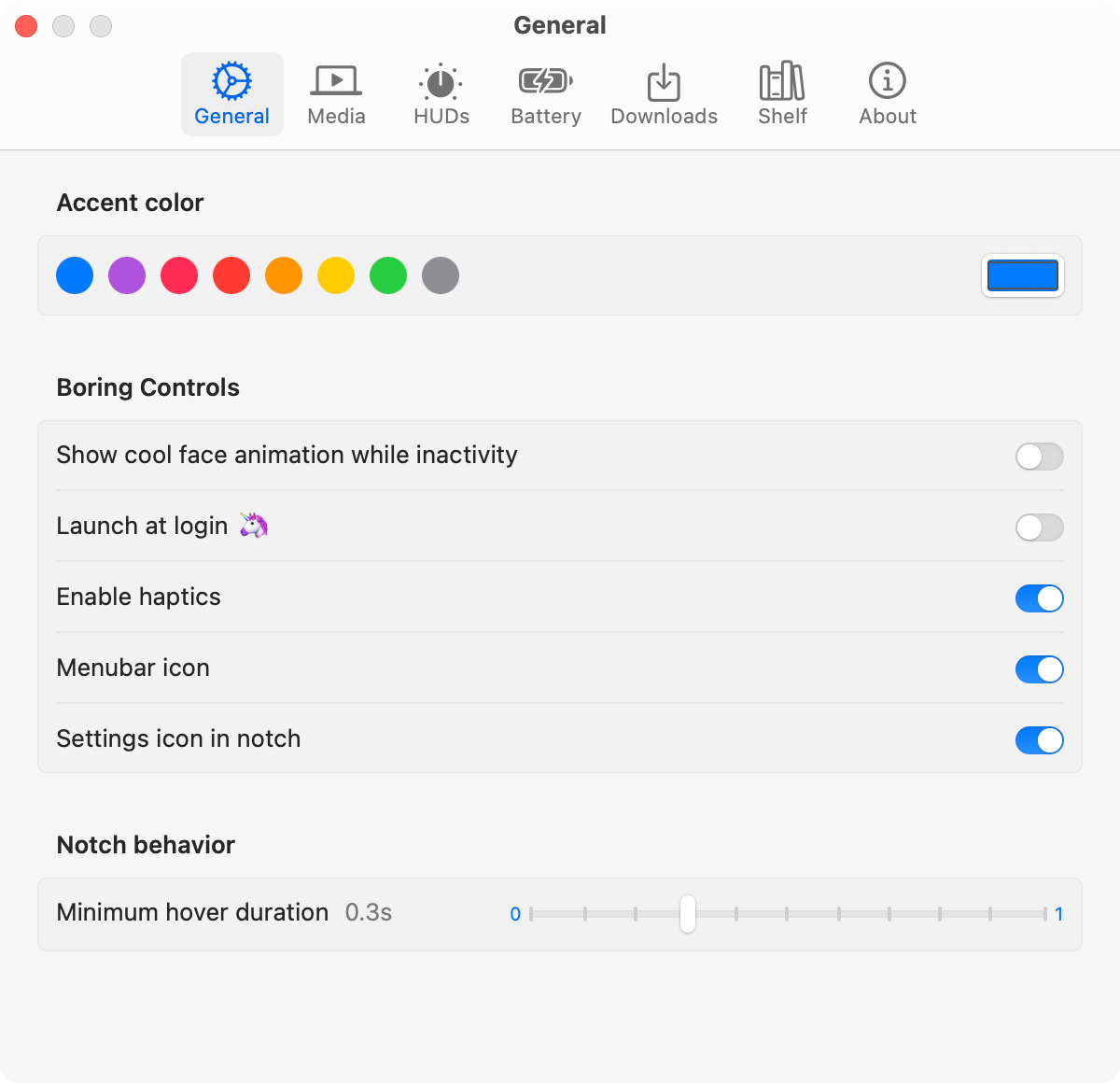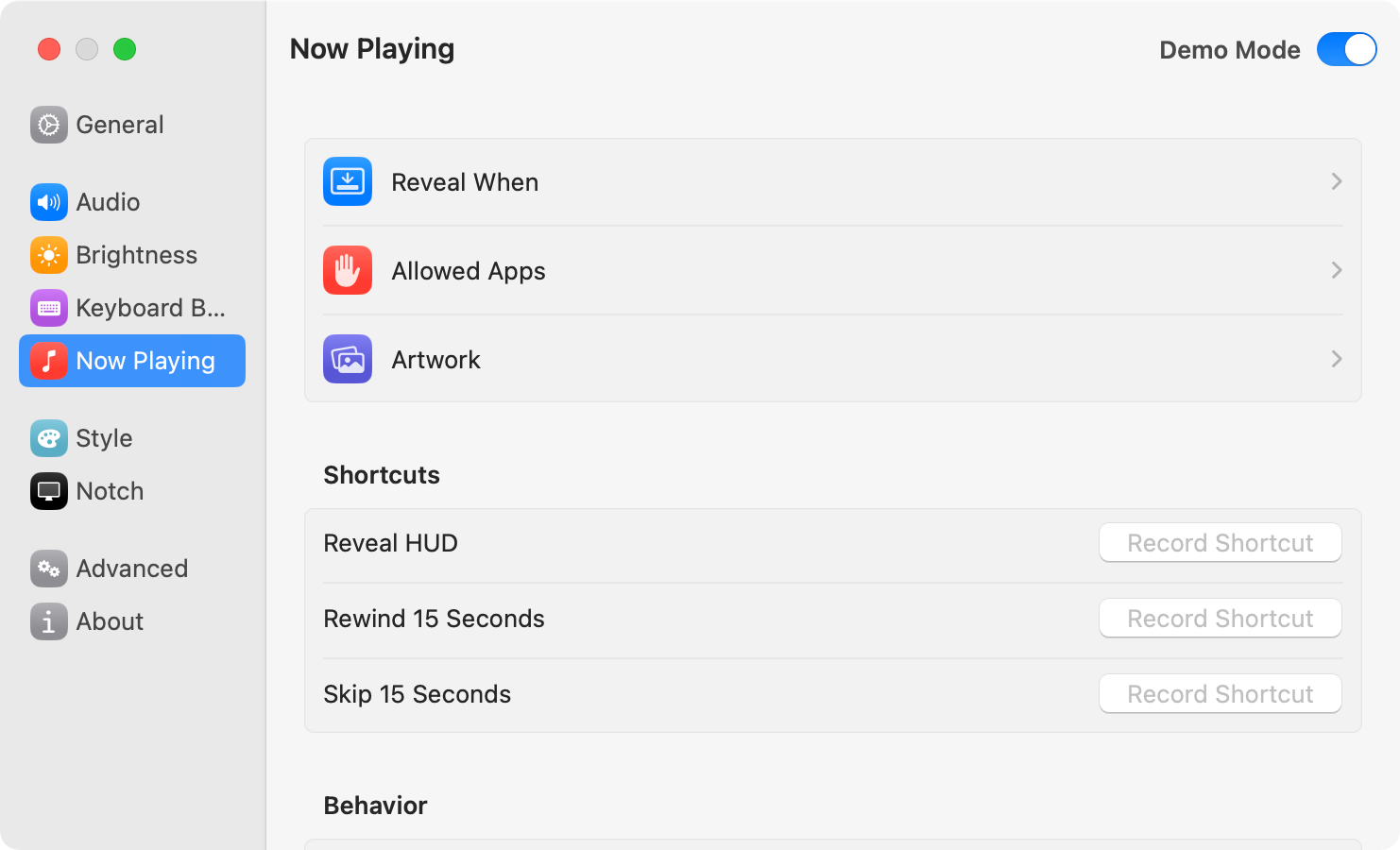Key Takeaways
- Add a Dynamic Island to your MacBook to turn the notch into an area that displays useful information, just like the feature does on the iPhone.
- Add Now Playing information, media controls, and additional features like widgets for triggering shortcuts, Calendar information and more.
- Some apps allow you to use this Dynamic Island area as a shelf for storing files and sharing via AirDrop.
Apple’s Dynamic Island is a clever use of “wasted” space on the iPhone. Now you can add similar functionality to your MacBook’s notch with one of many apps designed to repurpose the display gap that houses the webcam.
Best Mac Dynamic Island App: NotchNook
NotchNook is the most feature-rich and polished Dynamic Island implementation for the Mac. If Apple were to design some sort of Dynamic Island implementation of its own, it probably wouldn’t get anywhere near the deep customization that NotchNook enables.
The app works as a solid media controller, detecting music playback as a live activity and displaying album art and a small “Now Playing” animation on either side of the notch. This makes the notch slightly wider, but you can disable it by turning off “Enable live activities” in the app settings.
Clicking the notch reveals a full array of options, including media controls, larger album artwork, and additional panels for widgets. By default, you’ll see widgets for triggering Mac Shortcuts and a “Mirror” that you can click to see your webcam reflected back at you.
There’s also a Calendar widget, which shows not only the date but items of interest for the day. NotchNook’s developers are working on bringing quick app triggers, notes, and reminders integration. Alternatively, you can turn everything off and just use the media controls instead.
NotchNook is heavily customizable, from basic behavior like how the app should open (with a click, with a hover, with a swipe) to how much space the feature takes up, how much padding should appear between widgets, transparency options, and more.
You can also enable the “HUD replacement” option to move all of your on-screen controls into the notch area, including brightness and volume for a nice clean look. Lastly, the app has a file drop “tray” into which you can leave files for later retrieval (it also works as a trigger for sending files over AirDrop).
The app works with all Mac models, regardless of whether they have a notch or not as a “handler” for performing the same actions. NotchNook costs $3 per month as a subscription or you can buy it outright for $25. The app is also available on SetApp, and there’s a trial you can download to try before you buy.
Best Free Mac Dynamic Island App: Boring.Notch
If you’re looking for a completely free Dynamic Island implementation, look no further than Boring.Notch. Don’t be put off by the name, your MacBook’s notch is a lot more boring without this app installed. The app is under active development, and many features aren’t ready yet, but what’s there is good.
At present, Boring.Notch adds media controls to the notch complete with album art. The app shows a small live activity preview with album art and a “Now Playing” animation on either side of the notch. Hover the area to see more details and playback controls.
You also get a battery level and charge indicator (which you can disable if you want). There’s little customization at present, though the developers have plans to introduce more options in future releases.
There are also plans for a download indicator for Safari, Chrome, and Firefox (which sounds neat) plus Calendar integration, a clipboard history manager, gestures, HUD replacement, function buttons, a shelf with AirDrop support, and an app switcher.
Though much of this functionality isn’t yet ready, Boring.Notch is still a neat little free app that lets you glance at and quickly control media using the notch on your MacBook.
The developers of Boring.Notch have yet to sign the app with an Apple Developer certificate, so once you’ve installed the app to your Applications folder you’ll need to launch it, dismiss the warning, head to Settings > Privacy & Security and then hit “Open Anyway” at the bottom of the list.
MediaMate is a cheaper alternative to NotchNook, that includes many of the same features plus a bit more customization. Like NotchNook, it works on all Mac models regardless of whether they have a notch or not. The app adds media information to the top of the screen, though there are some notable differences.
In addition to being able to move volume, brightness, and keyboard brightness on-screen HUD elements to the notch area, you can also choose different styles for use elsewhere on the desktop (including rounded dials and iOS-style sliders that appear on the edge of the screen).
“Now Playing” information fully collapses into the notch, with a pop-up to display song changes by default. There are tons of options for customizing behavior and size, though the app lacks the “shelf” functionality in favor of focusing on media and the HUD.
Choose when to reveal the notch, which apps should appear, and whether album art can be displayed based on the app that’s currently playing. Record shortcuts to reveal the player (great for peeking at a song title without taking your hands off the keyboard), and to skip forward and backward by 15 seconds. You can also record keyboard shortcuts to adjust other media controls.
This is the most compact app in its default state and though it lacks the additional shelf functionality seen in NotchNook, it’s a solid mid-range option that offers a lot more than Boring.Notch.
You can buy MediaMate for a one-off fee of €6.99. Download the demo and try it out before you buy.
Other Dynamic Island Options
We came across two other options you might want to explore, though we’d recommend starting with the apps above.
NotchDrop turns your notch into a file drop shelf, without any media controls or other live activity integration. You can store, open, and drag files wherever you want and share them directly from the notch via AirDrop. The app costs $1.99 from the Mac App Store, or you can download the source code and compile it yourself.
Another option is Dynamic Island on macOS using SketchyBar. The project is dependent on SketchyBar and adds notifications, volume, and brightness HUD controls, Now Playing controls and media information, plus controls for Wi-Fi and app switching to the notch.
The app is free to download but requires a fair bit of setup. You’ll need to install the Homebrew package manager followed by SketchyBar, then install dependencies depending on what you want to use. Follow the installation instructions to set the app up.
Further Customize Your Mac Desktop
There are many ways you can customize your macOS desktop, and plenty of apps for adding widgets, wallpapers, and custom behaviors.
You might also want to check out the best iPhone apps that put the Dynamic Island to good use.











